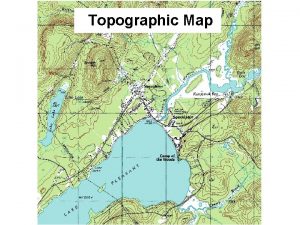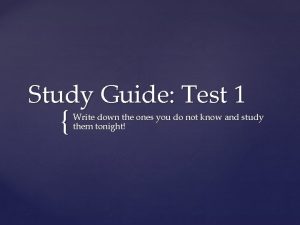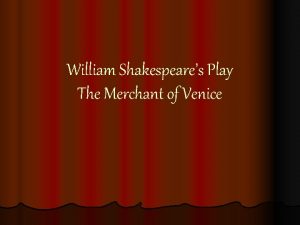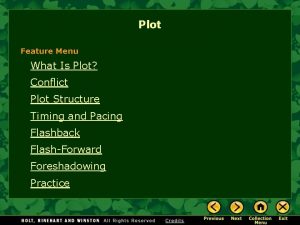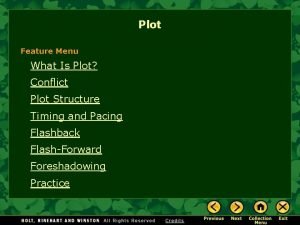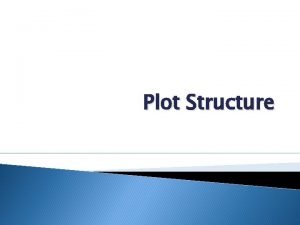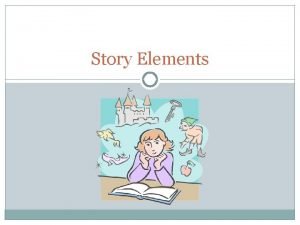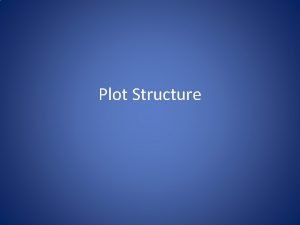CHARACTER ANALYSIS GRID Mapping Plot through Character Character











- Slides: 11

CHARACTER ANALYSIS GRID Mapping Plot through Character

Character Analysis Grid Created by Doug Buehl The purpose of the strategy is to demonstrate how characters are developed & how they drive the plot of a story through the conflicts they face or create.

Steps… The reader fills in the categories shown in a linear and circular progression. In a story, the main character is established by what they do, say and think. This is called exposition. This part of the narrative arc is represented in section #1 and #2.

More steps… As characters evolve through actions, dialogue, and thought, other characters act, speak and think. Because characters are connected within a story, they act, speak and think about each other. They also feel a certain way about each other (see #3).

And more steps… This is where the conflict starts both internally and externally. Where protagonists and antagonists are developed– where sympathetic characters and enemies become established. Where conflict and action rises to its climax. Conflict produces action; action rises through what the characters say and do, so keep filling in all areas as you move along.

Again, more steps… There actually two conflict circles in the center of the page. If it were me (which it is), within the outer circle I would ask students to consider the spats, tiffs, insults, etc. that point to a central conflict, which I would place directly in the smaller central circle. And/or, one could also include when the character generated conflict rose to its climax.

Finally, After the climax, there is resolution, and usually this is when the character changes is some way. The bottom square is reserved for the author. Conflict alludes to themes. How the author (or narrator) treats the character(s) represents his/her point of view.

Let’s try it…. Select a character from real life or literature that you know well. Better yet, fill in the chart with “A Nations Shame in Mind. ” Fill in the first 2 sections of the chart… As you are doing this, think about how other characters feel about the main character (3), and the conflicts created through these interactions (circles). Has the main character of your story changed? #4. Have any themes emerged? What is the author’s point of view? (or your point of view? And has it changed? )

Learning Strategies Independent � Reading � Visualization � Hands on � Kinesthetic Then, Collaboratively � Auditory � Problem solving (or a mix thereof)

CCSS KEY IDEAS AND DETAILS CCSS. ELA-Literacy. RL. 9 -10. 1 Cite strong and thorough textual evidence to support analysis of what the text says explicitly as well as inferences drawn from the text. CCSS. ELA-Literacy. RL. 9 -10. 2 Determine a theme or central idea of a text and analyze in detail its development over the course of the text, including how it emerges and is shaped and refined by specific details; provide an objective summary of the text. CCSS. ELA-Literacy. RL. 9 -10. 3 Analyze how complex characters (e. g. , those with multiple or conflicting motivations) develop over the course of a text, interact with other characters, and advance the plot or develop theme.

CCSS CRAFT AND STRUCTURE CCSS. ELA-Literacy. RL. 9 -10. 5 Analyze how an author’s choices concerning how to structure a text, order events within it (e. g. , parallel plots), and manipulate time (e. g. , pacing, flashbacks) create such effects as mystery, tension, or surprise. CCSS. ELA-Literacy. RL. 9 -10. 6 Analyze a particular point of view or cultural experience reflected in a work of literature from outside the United States, drawing on a wide reading of world literature.
 Memory parameters
Memory parameters Forward mapping vs backward mapping
Forward mapping vs backward mapping Terjemahan
Terjemahan Pga vs lga
Pga vs lga Minor terrain features
Minor terrain features Through one man
Through one man Furcation involvement classification
Furcation involvement classification Advantages of timber conversion
Advantages of timber conversion The night of scorpion poem
The night of scorpion poem Through the tunnel plot diagram
Through the tunnel plot diagram Exposition of the merchant of venice
Exposition of the merchant of venice Conclusion for merchant of venice
Conclusion for merchant of venice




